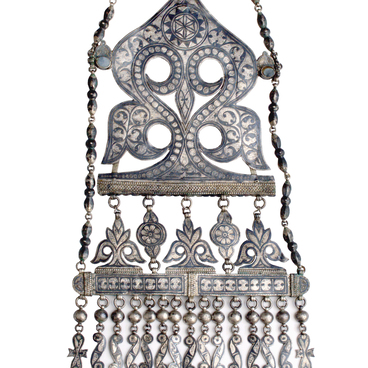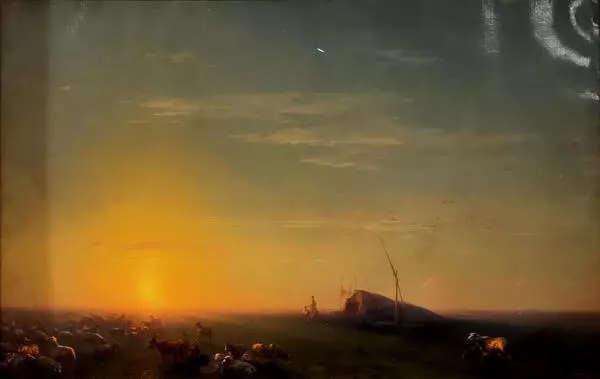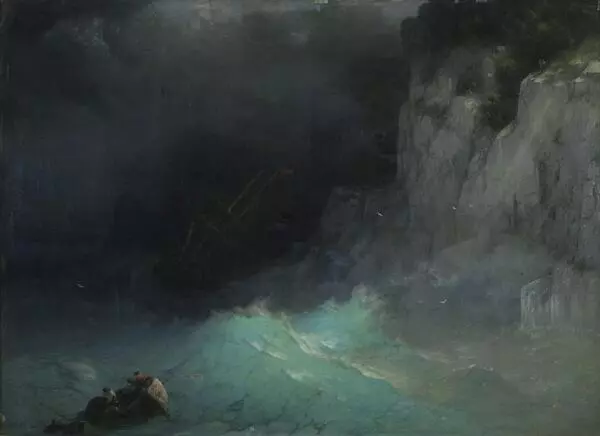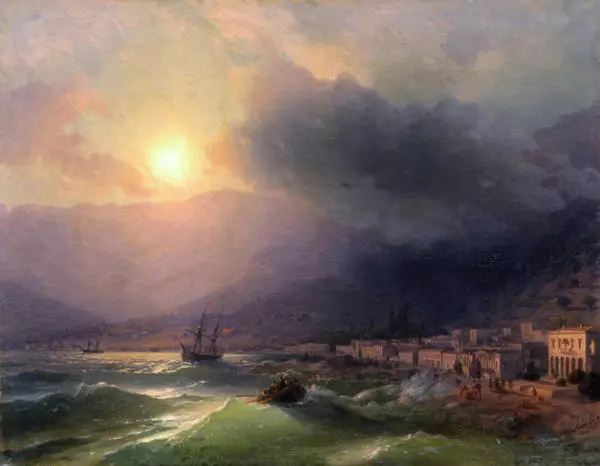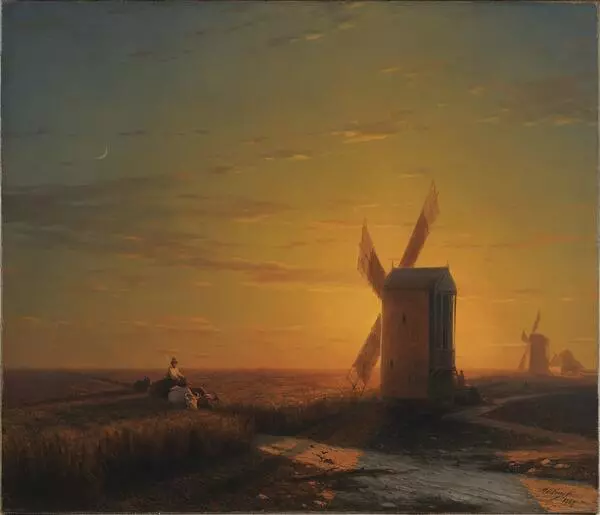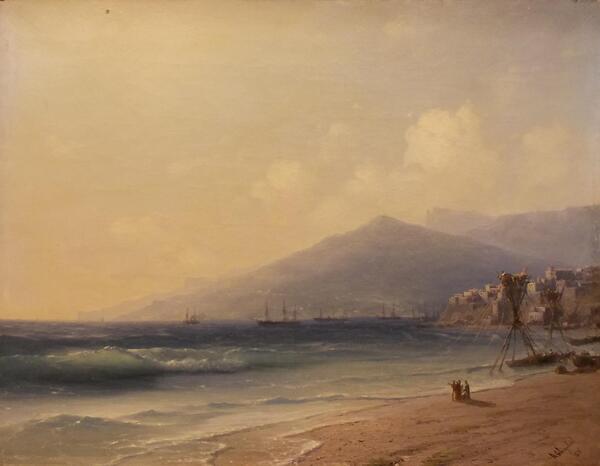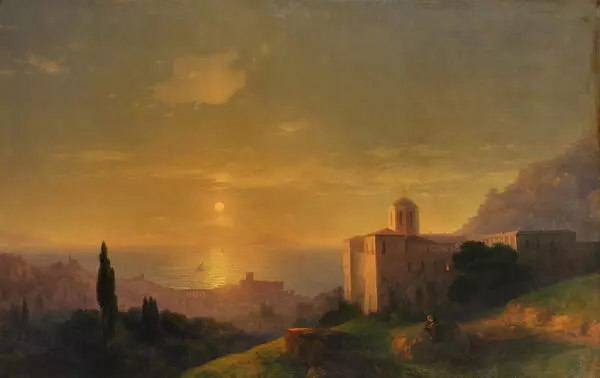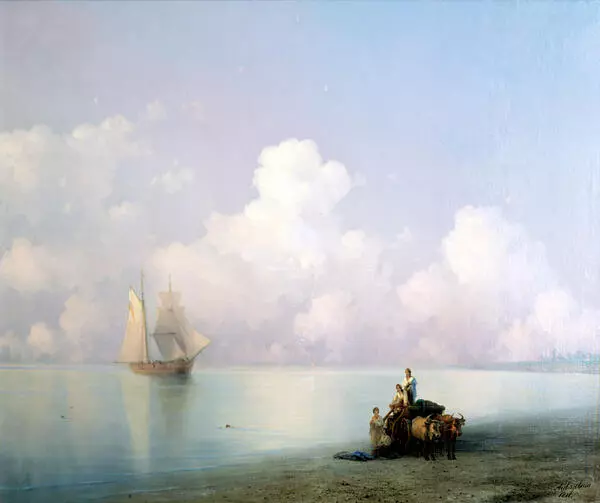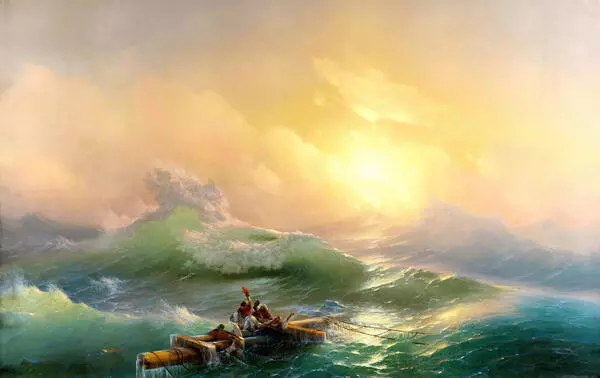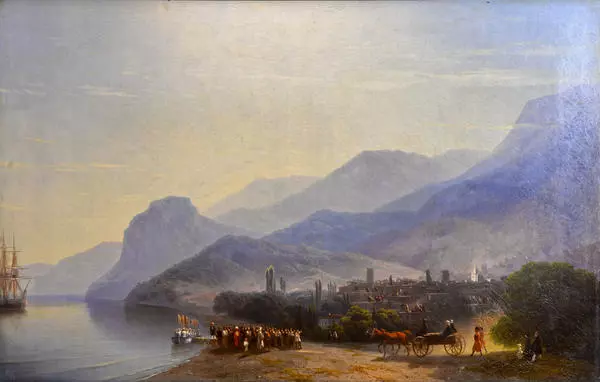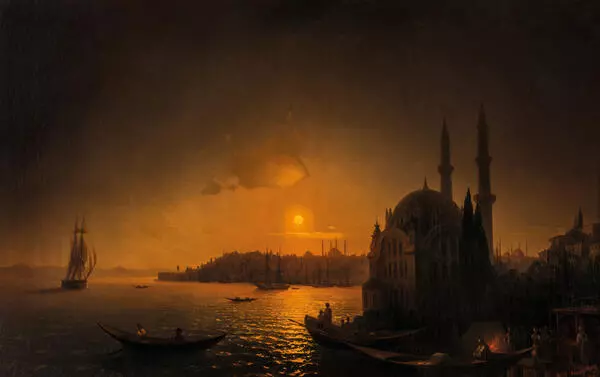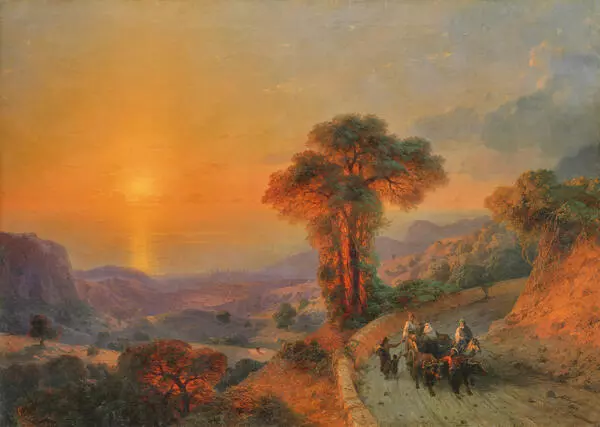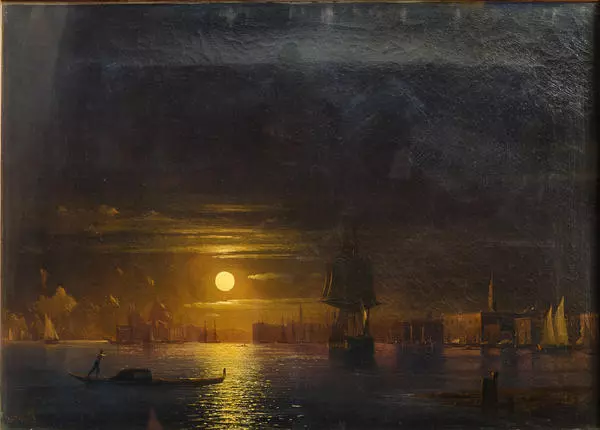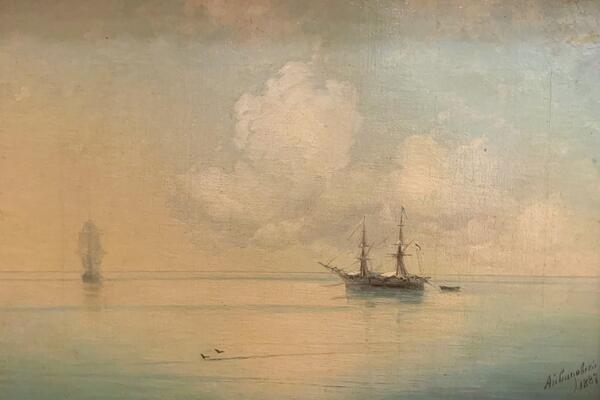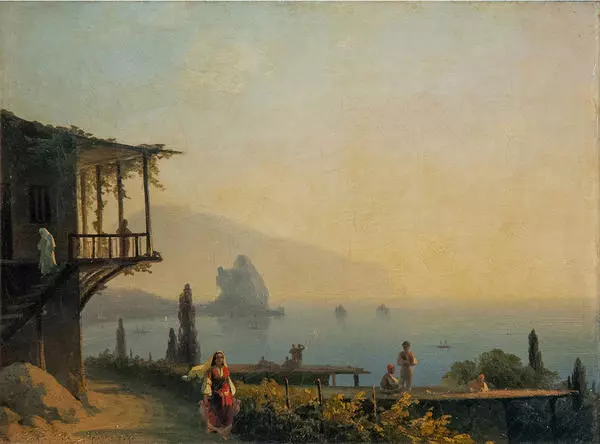Ivan Aivazovsky (1817—1900) is famous as the topmost seascapist in the history of Russian art. He was first noticed by the public due to his 1840’s pictures in Italy where he went to brush up his artistry after graduating from the Academy of Arts. In Italy, he made friends with the writer Nikolai Gogol, painter Alexander Ivanov, and other prominent figures of Russian culture. Aivazovsky was carried away by Italy, so that he returned to Russia with dozens of major paintings. It was exactly in Italy that his artistic method was finally shaped. It is known that the Emperor Nicholas I said to the artist: “Aivazovsky! I am the king of land, and you are the king of the sea!”
However, he did not paint marines alone. In the late 1860’s, Aivazovsky set out on a journey to the Caucasus and Transcaucasia. He managed to visit Ossetia, Dagestan, Georgia, and Armenia, and produce numerous astonishing mountain landscapes, which are distinguished for a fine feeling of nature and an observant perception of the country.
However, he did not paint marines alone. In the late 1860’s, Aivazovsky set out on a journey to the Caucasus and Transcaucasia. He managed to visit Ossetia, Dagestan, Georgia, and Armenia, and produce numerous astonishing mountain landscapes, which are distinguished for a fine feeling of nature and an observant perception of the country.



